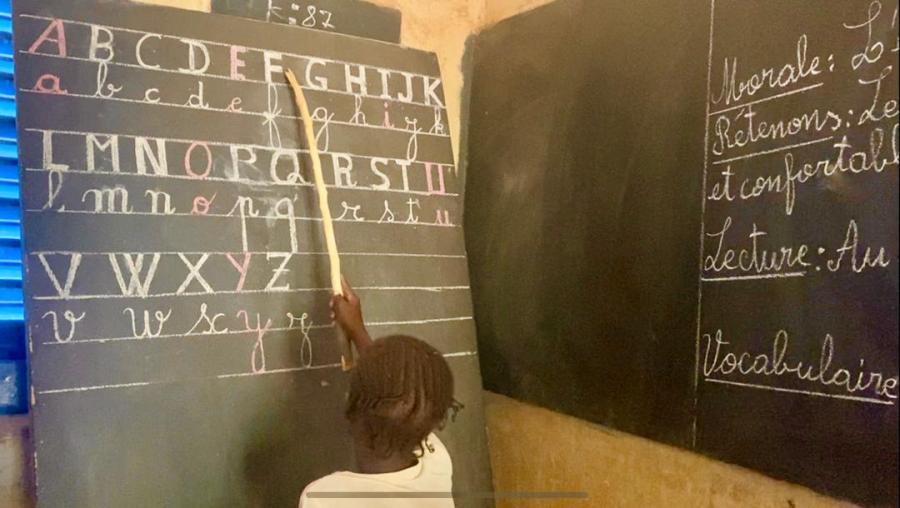The Djenné Project, Mali: Jean Louis Bourgeois, Coordinator
The Djenné mosque -- the world's largest adobe structure -- and surrounding town rank with Tombouctou (Timbuktu) and the famous Dogon (Bandiagara) Escarpment as the most important of Mali's tourist attractions. The town now faces disaster as plans for an upstream dam progress.
Inhabited since the third century B.C., Djenné became a market center vital to the trans-Saharan gold trade and then a spiritual center for the dissemination of Islam. The architecture of the mosque and of the old town dates to this time in the 15(th) and 16(th) centuries; the original mosque (rebuilt in 1907) was built in the 13(th) century by Djenné's first Islamic ruler. The city's hundreds of traditional houses are built on hills and adapted to the seasonal floods.
Seasonal floods have always been essential to the subsistence agriculture economy in the region. In the last 20 to 30 years, however, climactic change has resulted in a reduced floodplain, and towns on the edge of the floodplain have experienced real hardship. A dam was consequently proposed in the 1980s along the Bani River at Talo (upstream of Djenné). The proposed dam's purpose was to raise the level of the river sufficiently to feed irrigation networks covering formerly flooded regions. Following an environmental impact assessment (EIA) lacking sufficient topographical and hydrological data, a follow-up study determined that the risk of flooding to villages upstream (always a worry with large dams) was minimal. Contracts were set to be awarded this spring. No mention was made of the downstream effects.
Together with Jean-Louis Bourgeois, Cultural Survival commissioned a report by an expert team from the International Development Office at Clark University in Worcester, Massachusetts. The report concludes that there is reason to pursue research on the possible detrimental effects the dam might have on downstream communities and on the Niger Inland Delta.
Downstream residents of Djenné may be more susceptible to drought. If the Bani had an ample supply, water sufficient to meet the needs of downstream farmers could be released (through a sluice gate) during dry season. The Talo Dam, however, is proposed precisely because of the Bani's dwindling water supply. The proposed sluice gate is unlikely to help at the height of the dry season.
Fish populations may decline, resulting in a loss of livelihood for the region's many fishermen. Life cycles of fish in the Bani River are dependent on seasonal flooding; prolonged drought in the region is already affecting fish populations. Dams on other floodplain rivers have proven that the construction of dams exacerbates drought effects.
Pastoralists also use seasonal wetlands, especially as surrounding rangelands dry out. Controlled flooding cannot simulate the natural floodplain's quantity or distribution. Nomadic populations already travel great distances to graze cattle in the delta; their rangelands will become more arid as the floodplain shrinks.
A reduction in groundwater levels is expected. Wetland flooding can sustain groundwater levels even in distant aquifers. Mali's prolonged drought has created a precarious situation; the Talo Dam could further deplete aquifers.
The health of the populations in Djenné and surrounding villages may deteriorate as irrigated wetland areas and stagnant reservoir water create ideal breeding grounds for organisms responsible for the spread of malaria, schistosomiasis, and bilharzias.
The existing dam at Manatali in Mali's Kayes region (in the west) has resulted in depleted aquifers, 12,000 displaced people, and an increased incidence of diseases such as malaria and schistosomiasis. Plans to simulate flooding for downstream farmers and fishers evaporated as upstream needs took precedence over downstream demands. The Manatali dam met none of its original goals and objectives and has had a significant detrimental effect on downstream farmers. Even the African Development Bank acknowledges its failure. Why then is the Bank supporting the Talo Dam?
The Djenné Old Town is a UNESCO-designated World Heritage Site. A dam at Talo could potentially result in the displacement of 20,000 residents of Djenné.
Efforts to bring attention to the dam are supported by a former Malian Director of Agriculture and by famous Malian guitarist Ali Farka Touré. Residents of Djenné are outspoken in resisting the dam, and the Mande Studies Association and the International Rivers Network have expressed concern.
A recent letter by Cultural Survival to President Omar Kabbaj of the African Development Bank concluded, "If our suspicions are confirmed, the Talo Dam project would have severe [and] detrimental consequences for the people of Djenné. We therefore strongly urge you not to proceed with the project until you have studied our comprehensive report on the dam's potential impacts -- environmental, social and economic."
African Development Bank U.S. Executive Director Willene A. Johnson replied on Febmary 15, 2001. She reports that senior management officials at the African Development Fund have assured her that it will not give its approval to begin construction until they have reviewed the report and discussed Cultural Survival's findings with the Government of Mali. She promises that the Bank's management will consider the report findings carefully, and will, in consultation with the Malian authorities, make whatever further changes are called for to ensure that the Talo Dam project does not damage local communities.
While this news is encouraging, it may not be cause for celebration. Cultural Survival remains dedicated to resisting this potential disaster. A copy of the International Development Office's final report is available from Cultural Survival; we encourage those with deep concerns about the threat to this historic city to write to officials with the Malian government and the African Development Bank.
Article copyright Cultural Survival, Inc.



